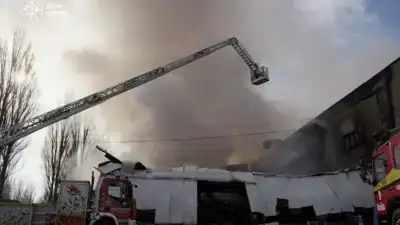
March 19, 2025, Washington, D.C.:
Russian President Vladimir Putin and U.S. President Donald Trump held a lengthy phone call on Tuesday to discuss the war in Ukraine, reaching a partial agreement on halting strikes on energy infrastructure. However, the broader U.S.-backed ceasefire proposal failed to gain Moscow’s approval, as Putin laid out conditions that Kyiv and its allies are unlikely to accept.
The Kremlin confirmed that Putin had agreed in principle to a ceasefire on energy infrastructure, provided Ukraine reciprocates. This marks the first mutually acknowledged pause in attacks on key power and fuel facilities in the three-year-long war. Ukrainian President Volodymyr Zelensky cautiously welcomed the move but stressed that Kyiv would retaliate if Russia violated the truce. “It cannot be the case that Russia attacks our energy sector and we remain silent,” he said in an address.
Despite the limited breakthrough, the conversation underscored deep divisions. Putin refused to commit to a broader ceasefire, reiterating his demand that Western military and intelligence support for Ukraine must cease entirely. This demand, described by analysts as a non-starter for Ukraine and its NATO allies, effectively stalled progress toward a comprehensive peace agreement.
The White House, in its official statement, framed the call as “productive,” highlighting that both leaders had agreed to initiate “technical negotiations” on a wider ceasefire, including maritime security in the Black Sea. However, the Kremlin’s statement took a different tone, emphasizing Russia’s conditions for peace, including an end to Ukraine’s mobilization efforts and arms procurement.
While Trump has been vocal about his desire to broker an end to the conflict, his diplomatic approach has drawn skepticism from European allies. Critics argue that previous ceasefires proposed by Russia have been used to regroup and strengthen its position. Fiona Hill, a former Russia adviser under Trump, described Putin’s move as a “power play,” saying, “Putin’s idea of a negotiation is to start a fight, beat the crap out of you, and then say he’s going to stop beating you.”
The call also addressed humanitarian concerns, with Putin agreeing to release 23 severely wounded Ukrainian soldiers and finalize a prisoner exchange involving 175 detainees from each side. While this was a goodwill gesture, Ukrainian officials viewed it as a tactic to gain leverage in future talks.
Further complicating the situation, Trump’s engagement with Putin has caused tensions with Ukraine. Last week, a diplomatic rift emerged between Trump and Zelensky after the U.S. briefly halted military aid to Ukraine. That suspension was lifted after Ukraine agreed to Washington’s proposed ceasefire framework during talks in Saudi Arabia. However, Putin’s rejection of a full truce has left Kyiv in a precarious position.
As negotiations continue, Ukraine has drawn three firm red lines: it will not recognize Russian sovereignty over occupied territories, will not agree to neutrality, and will not scale down its armed forces. With European nations pledging continued military support to Ukraine, and Moscow showing no signs of softening its stance, a lasting peace agreement remains uncertain.
For now, the limited ceasefire on energy infrastructure may offer temporary relief, but fighting in Ukraine’s cities and along the frontlines shows no sign of stopping.
Get more News Headlines on our Social Platforms And Do Follow.
https://rb.gy/q8ugti
https://rb.gy/t4q0ay
rebrand.ly/pwoq4qx
rebrand.ly/nddyfab




